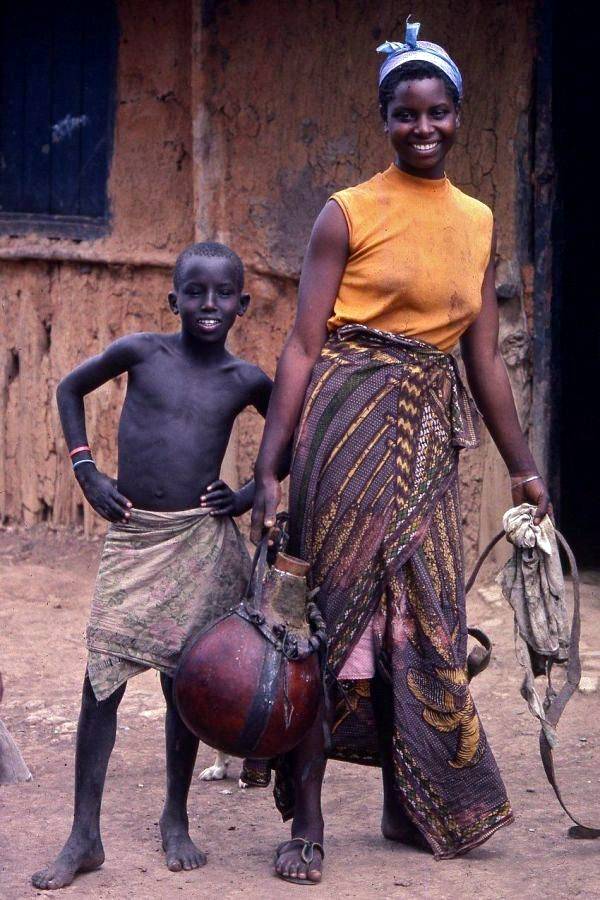
Kenyan Tribal Groups

Figure 1.--This photo was taken in a Maasai village. The woman belongs to another tribe, but she married a Maasai man. Her son, as everyday clothing, is wearing a cloth wrapped around the waist. Surely at school he wears the dark red uniform required by Kenyan schools, but earlier a male not yet inducted as a warrior, would have gone unclothed unless te weather became cool.
|
|
Kenya, as in other African countries, has a complex mix of tribal groups. The precise number varies depending on the various authors addressing the topic. Most suggest somethibg like 40-70 different tribes. Coming up with a precise number is complicated because many of the tribes are related and thus it is dificult to assess if they are actually a separate tribal group. Kenyan tribes have never been closed units. Tribal elements like language, culture and appearance commonly overlap. Kenyan tribal families often include members of different tribes. And the situation is further complicated by the fact that the various tribes have du\iffering traditions a to whether a person’s tribal identity is determined by the paternal or maternal line. The Kenyan tribes are commonly divided into five major groups: 1) Hunter-gathers, 2) Bantu, 3) Niloti Parniloti, 4) Cushiti, and 5) Swahilli. The groups are primarily, but not edntirely based on linguistic patterns. The Hunter-gathers include the Dahalo, El-Molo, Ndorobo, and Sanye. The hunter-gathers are the moee primitive tribes and inclusion is more of a life-style matter than linguistics. The Bantu are divided into three major geographic groups: Ovest, Centro, and Costa. The Niloti Paraniloto include four major groups: Niloti, Teso, Maasai, and Kalenjin. The best known tribe is the Maasai one of the Niloti Parniloti people. They are noe of the best known tribes not only in Kenya, but all of Africa. As a result they have become virtually a symbol of African tribal life. The Maasai are a hearding people famous for their red garments. The Cushiti include the Somali, Rendille, Galla, Boni, Borana, Gabbra, Orma, and Sakuye. The Swahilli include the Bajun, Pate, Mvita, Vumba, Ozi, Fundi, Siyu, Shela, and Amu.
HBC

Navigate the Boys' Historical Clothing Web Site:
[Introduction]
[Activities]
[Biographies]
[Chronology]
[Cloth and textiles]
[Clothing styles]
[Countries]
[Topics]
[Bibliographies]
[Contributions]
[FAQs]
[Glossaries]
[Images]
[Links]
[Registration]
[Tools]
[Boys' Clothing Home]
Navigate the Boys' Historical Clothing national pages:
[Return to the Main Kenyan page]
[Return to the Main African page]
[Return to the Main country parks page]
[Angola]
[Cape Verde Islands]
[Democratic Republic of the Congo]
[Ethiopia]
[Gabon]
[Lessotho]
[Madagascar]
[Mali]
[Somalia]
[South Africa]
[Uganda]
Created: 2:32 AM 11/16/2009
Last updated: 2:33 AM 11/16/2009



